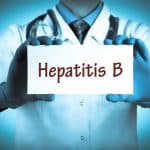Diabetes Risk for HCV Patients Receiving Liver Transplant
Hepatitis C Infection Raises Diabetes Risk After Liver Transplants
www.medpagetoday.com
VILLEJUIF, France, Jan. 8 — Liver transplant recipients who are hepatitis C-virus (HCV) positive and receive Prograf (tacrolimus) as part of their immunosuppressant regimen are at a significantly higher risk for new-onset type 2 diabetes than HCV-negative patients, researchers here reported.
Among 211 primary liver-graft recipients, 22.7% developed new-onset diabetes, and the occurrence was higher among those treated with Prograf compared with Neoral (cyclosporine), particularly when the patients were HCV positive, found Faouzi Saliba, M.D., from the Hôpital Paul Brousse, and colleagues.
The evidence suggests that HCV status is a strong predictor of post-transplant diabetes, and that “the immunosuppressive treatment should therefore be tailored to the patient’s risk, especially in case of HCV infection,” the investigators wrote in the January issue of Liver Transplantation.
But the new diabetes cases may be transient, as seen by the fact that nearly all of the incident cases were taking steroids and developed diabetes within three months of their transplants, noted Paul J. Thuluvath, M.D., of Johns Hopkins in Baltimore, in an accompanying editorial.
“In a previous study, 24 of 88 patients (27%) were found to have diabetes mellitus at the end of the first postoperative year and were considered as having new-onset diabetes mellitus,” Dr. Thuluvath wrote, “but at the second year after liver transplantation, only eight patients (9%) had evidence of diabetes mellitus, which implies the transient nature of diabetes mellitus in many transplant recipients.”
“This may suggest that many patients in the cohort studied by Saliba et al may not have diabetes with longer follow-up, especially when corticosteroid therapy is discontinued.”
Dr. Saliba and colleagues conducted a cross-sectional, multicenter retrospective study of the incidence of new-onset diabetes and potential risk factors in the 211patients who had undergone a primary liver transplant from six to 24 months earlier.
For each patient, data on demographics, immunosuppressive regimens, familial and personal histories, hepatitis status, and cardiovascular risks were collected at a single routine post-transplant visit, and the data on patients who developed new-onset diabetes were compared with those of patients in the same cohort who did not develop the disease.
They used American Diabetes Association/World Health Organization criteria to define diabetes: fasting blood glucose of more than 1.26 g/L confirmed on at least two occasions, or current treatment with an oral antidiabetic drug or insulin. They defined impaired fasting glucose as two fasting blood glucose measurements > 1.10 to < 1.26 g/L (> 6.1 and < 7.0 mmol/L) without antidiabetic therapy.
The authors found that the overall rate of new-onset diabetes was 22.7%, occurring in 24% of the 175 Prograf-treated patients, and in 16.7% of the 36 Neoral-treated patients. About four in five cases (81%) were diagnosed within three months of the transplant.
The occurrence was also significantly higher among HCV-positive patients compared with HCV-negative patients, at 41.7% vs. 18.9% respectively (P=0.008).
When they broke the data down by calicineurin inhibitor type, they found that in Prograf-treated patients, the rate of diabetes was 46.7% among those patients who were HCV positive, compared with 19.3% for those were HCV negative (P=0.0014).
Among Neoral-treated patients, 16.7% (one in six) of HCV-positive patients developed diabetes, as did 17.2% (five of 29) of HCV-negative patients. There was no significant difference between the groups.
In addition to HCV status, independent pretransplantation risk factors for new diabetes included impaired fasting glucose and a maximum lifetime body-mass index more than 25 kg/m2.
“Emergence of new onset diabetes mellitus after liver transplantation is related to risk factors that can be detected prior to the graft, like maximum lifetime BMI, impaired fasting glucose, and HCV status,” the authors wrote. “Tacrolimus induced a significantly higher incidence of new onset diabetes mellitus in the HCV-positive compared to the HCV-negative patients.”
In his editorial, Dr. Thulavath noted that the authors failed to clarify the role of corticosteroids in the development of post-transplant diabetes.
“It is unclear whether the actual dose or dose adjusted for body weight is more relevant for the development of corticosteroid-induced DM in transplant recipients,” he wrote. “The authors do not provide data on median or mean corticosteroid dose when new-onset diabetes mellitus was diagnosed. Another concern with this study was that the diagnosis of new-onset diabetes mellitus was made on the basis of fasting blood glucose on two separate occasions. In a retrospective study from 10 centers, it may not be safe to assume that the blood glucose was drawn in a fasting state even in the most compliant patients.”







